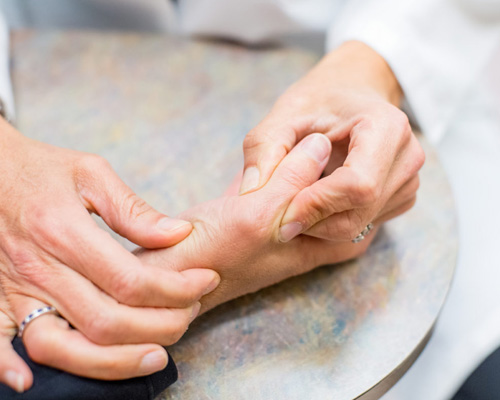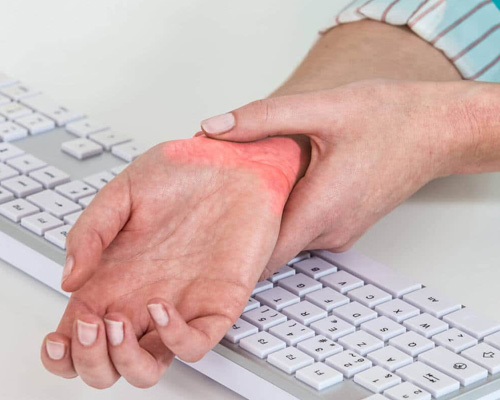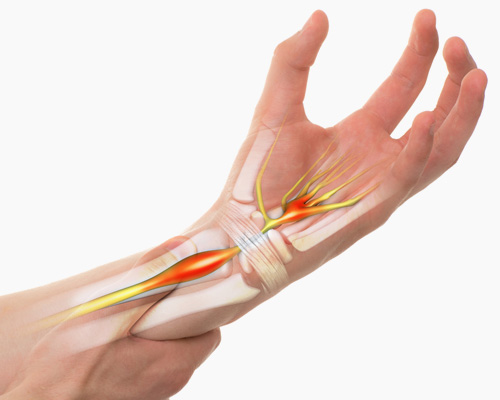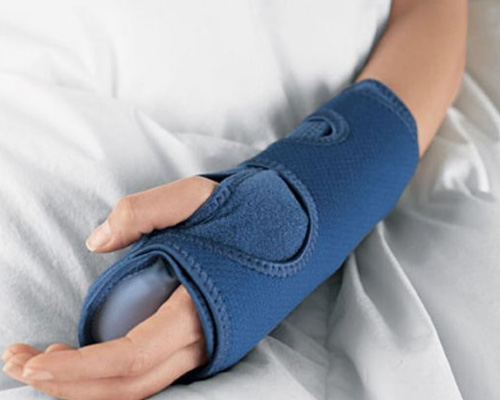Signs and symptoms of Carpal Tunnel Syndrome?
Carpal tunnel syndrome is a hand and arm condition that causes numbness, tingling and other symptoms. Carpal tunnel syndrome is caused by a pinched nerve in your wrist. Any condition that causes swelling or a change in position of the tissue within the carpal tunnel can squeeze and irritate the median nerve. Irritation of the median nerve in this manner causes tingling and numbness of the thumb, index, and the middle fingers a condition known as "carpal tunnel syndrome."
A number of factors can contribute to carpal tunnel syndrome, including the anatomy of your wrist, certain underlying health problems and possibly patterns of hand use.
Bound by bones and ligaments, the carpal tunnel is a narrow passageway located on the palm side of your wrist. This tunnel protects a main nerve to your hand and the nine tendons that bend your fingers.
Compression of the nerve produces the numbness, tingling and, eventually, hand weakness that characterize carpal tunnel syndrome. Fortunately, for most people who develop carpal tunnel syndrome, proper treatment usually can relieve the tingling and numbness and restore wrist and hand function.
Carpal tunnel syndrome usually starts gradually with numbness or tingling in your thumb, index and middle fingers that comes and goes. This may be associated with discomfort in your wrist and hand. Common carpal tunnel syndrome symptoms include:
- Tingling or numbness. You may experience tingling and numbness in your fingers or hand, especially your thumb and index, middle or ring fingers, but not your little finger. This sensation often occurs while holding a steering wheel, phone or newspaper or, commonly, waking you from sleeping. The sensation may extend from your wrist up your arm.
- Weakness. You may experience weakness in your hand and a tendency to drop objects. This may be due to the numbness in your hand or weakness of the thumb's pinching muscles, which are controlled by the median nerve.



